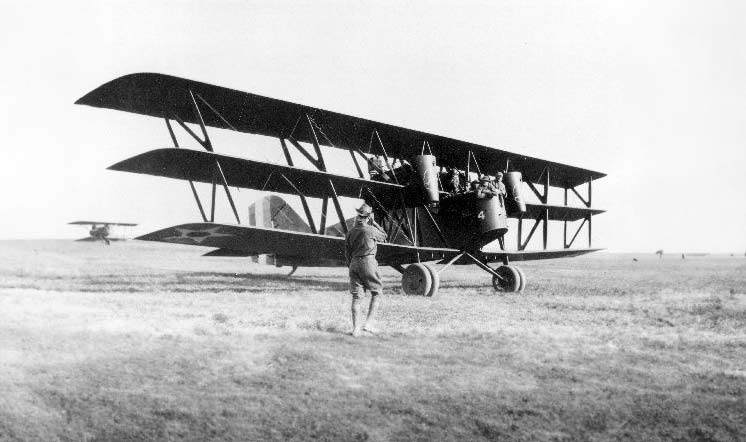Boeing GA-1: an armored triplane designed for ground attack, armed heavily with machine guns and cannons, first flown in 1920. This article delves into the Boeing GA-1, a ground attack aircraft developed post-World War I for the United States Army Air Service. It explores the historical context and development, design specifications, performance metrics, military use, and the eventual obsolescence of this heavily armored triplane.
The Boeing GA-1, sometimes referred to as the GAX, represents an intriguing chapter in the evolution of military aircraft. Developed in the aftermath of World War I, the GA-1 was Boeing’s attempt to create an armored ground attack plane capable of withstanding intense ground fire while delivering a significant offensive payload.
History of Development of the Boeing GA-1:
In the early 1920s, the United States Army Air Service identified a need for a specialized ground attack aircraft. With the experiences of World War I fresh in mind, where trench warfare and ground targets became significant aspects of conflict, there was a clear demand for an aircraft designed to support ground troops and engage enemy forces from the air.
The Boeing GA-1’s development began when the Engineering Division of the U.S. Army issued requirements for a ground attack aircraft. Boeing, then a young aviation company, took on the challenge and launched the program. The company was venturing into a relatively new realm of aviation, focusing on the integration of armor to protect the aircraft from ground-based fire, which was a direct response to the vulnerabilities observed in earlier aircraft during the war.
The program was initiated by Boeing based on the U.S. Army specifications and overseen by the company’s chief designer, James Foley.
Design of the Boeing GA-1:
The design of the Boeing GA-1 was heavily influenced by the requirement for armor. The aircraft was a triplane, a design choice that was becoming obsolete but provided the lift necessary for the heavy armor plating. The GA-1 was an all-metal aircraft, which was still somewhat novel at the time. It was outfitted with thick steel armor that protected the engine, pilot, and gunner compartments, as well as the fuel system.
Weighing approximately 4,000 pounds (1,814 kilograms), it was exceptionally heavy for its time. It featured two open cockpits in tandem for the pilot and gunner, and a third cockpit for an observer situated between the wings. The armament included multiple .30 caliber machine guns and a 37mm cannon, a substantial offensive payload.

Performance of the Boeing GA-1:
The performance of the Boeing GA-1 was, unfortunately, a disappointment. The aircraft was powered by a Liberty 12A engine capable of producing 435 horsepower (324 kW), yet it was underpowered for its weight. The GA-1’s maximum speed topped out at approximately 96 mph (154 kph), with a service ceiling of just 6,500 feet (1,981 meters) and a range of about 350 miles (563 kilometers).
When compared to its contemporaries, the GA-1 was outclassed in speed, maneuverability, and operational ceiling. Other aircraft of the era, such as the DH.4, were lighter, faster, and more versatile, though less heavily armored.
Military Use and Combat of the Boeing GA-1:
The Boeing GA-1 never saw combat. The aircraft’s design did not meet the practical requirements of the military, and only a handful were built. The concept of a heavily armored aircraft was sound, but the implementation in the GA-1 was not successful. The performance drawbacks overshadowed the advantages of its armor and armament, and thus the U.S. Army Air Service did not adopt the aircraft into its fleet.
The Boeing GA-1 was an ambitious attempt to meet the military’s need for a robust ground attack aircraft. Despite its innovative armored design and heavy armament, its performance limitations led to the program’s cancellation. The GA-1 serves as a historical example of the challenges faced in early aircraft development and the trade-offs between armor, firepower, and performance.
Back to the Warbirds section.